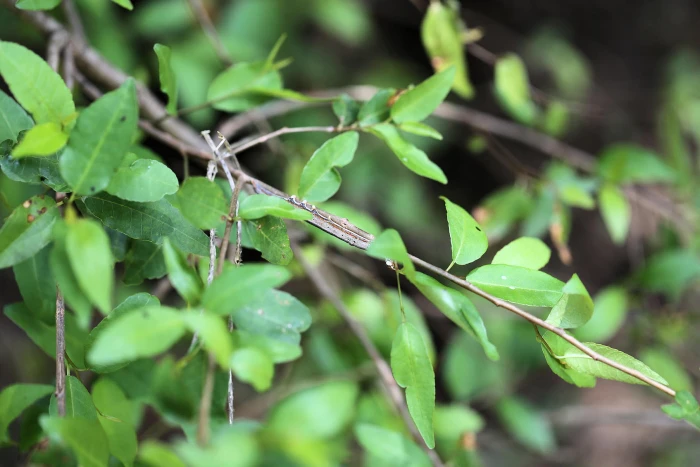Tamboti
(Spirostachys africana)
Tamboti (Spirostachys africana)
/
/

Wynand Uys
CC BY 4.0
Image By:
Wynand Uys
Recorded By:
Copyright:
CC BY 4.0
Copyright Notice:
Photo by: Wynand Uys | License Type: CC BY 4.0 | License URL: http://creativecommons.org/licenses/by/4.0/ | Rights Holder: Wynand Uys | Publisher: iNaturalist | Date Created: 42344 |




















Estimated Native Range
Climate Requirements for Milwaukee, Wisconsin
| This Plant | Your Site | Plant Suitability for Your Location | ||
|---|---|---|---|---|
| • Precipitation | 5" - 60" | 32" | Your precipitation may be too high for this plant. | Too high |
| • High Temp. | 73°F - 98°F | 83°F | Your summer temperatures are normal for this plant. | Excellent |
| • Low Temp. | 31°F - 69°F | 12°F | Your winter temperatures may be too cold for this plant | Too cold |
This plant may not grow well at your location - your precipitation is too high.
Summary
Spirostachys africana, commonly known as Tamboti or African Sandalwood, is a deciduous tree native to the low-lying areas and riverine woodlands of Southern Africa, including South Africa, Swaziland, Zimbabwe, and Mozambique. It typically grows up to 33 feet (10 meters) tall and is characterized by a straight trunk with rough, grey-black bark. The leaves are small, elliptic, and turn a striking bright red in winter before they fall. Tamboti blooms with inconspicuous, catkin-like flowers, followed by small capsules that create a popping sound when they split open to release seeds.
Tamboti is valued for its beautiful red foliage in winter and its fragrant, dense timber, which is used in fine woodworking and furniture making. Due to its toxicity, it is not commonly used in residential areas but may be found in larger landscapes or conservation areas where its ecological role can be appreciated. It requires well-drained sandy soils and is tolerant of drought once established. In cultivation, it prefers full sun to partial shade. Gardeners should handle this tree with care, as all parts contain a poisonous latex that can cause severe irritation. The latex has been traditionally used as a fish poison and on arrow tips for hunting. Despite its toxic nature, Tamboti plays a crucial role in its native ecosystem, providing habitat and food for various wildlife species.CC BY-SA 4.0
Tamboti is valued for its beautiful red foliage in winter and its fragrant, dense timber, which is used in fine woodworking and furniture making. Due to its toxicity, it is not commonly used in residential areas but may be found in larger landscapes or conservation areas where its ecological role can be appreciated. It requires well-drained sandy soils and is tolerant of drought once established. In cultivation, it prefers full sun to partial shade. Gardeners should handle this tree with care, as all parts contain a poisonous latex that can cause severe irritation. The latex has been traditionally used as a fish poison and on arrow tips for hunting. Despite its toxic nature, Tamboti plays a crucial role in its native ecosystem, providing habitat and food for various wildlife species.CC BY-SA 4.0
Plant Description
- Plant Type: Tree
- Height: 20-50 feet
- Width: 15-20 feet
- Growth Rate: Slow
- Flower Color: Green
- Flowering Season: Summer
- Leaf Retention: Deciduous
Growth Requirements
- Sun: Full Sun, Part Shade
- Water: Medium
- Drainage: Medium, Fast
Common Uses
Bird Garden, Butterfly Garden, Low Maintenance
Natural Habitat
Low-lying areas and riverine woodlands of Southern Africa
Other Names
Common Names: Tamboti, Spirostachys, Jumping-Bean-Tree, Muconite, Umtamboti, African Sandalwood
Scientific Names: Spirostachys africana, Excoecaria africana, Excoecaria synandra, Excoecariopsis synandra, Myrica holtzii, Sapium africanum, Spirostachys synandra, Stillingia africana
GBIF Accepted Name: Spirostachys africana